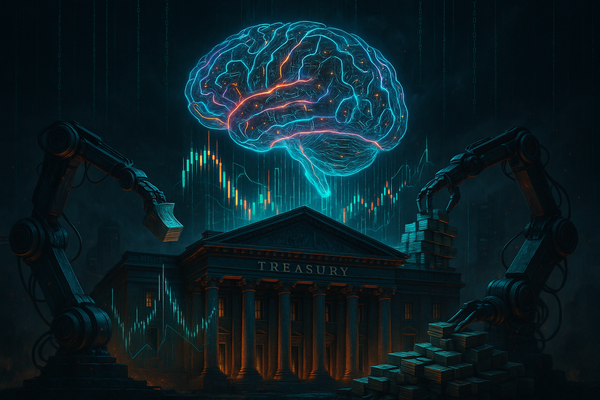AI Hallucinations Explained: Causes, Risks, and Cybersecurity Threats

Artificial intelligence has transformed industries by automating tasks, generating content, and supporting decision-making. Despite its capabilities, AI systems, especially large language models (LLMs), are prone to producing outputs that are factually incorrect, misleading, or entirely fabricated. These inaccuracies are known as AI hallucinations. Understanding AI hallucinations is crucial for businesses, developers, and researchers to maintain trust and reliability in AI-driven systems.
What Are AI Hallucinations?
An AI hallucination occurs when a machine learning model generates information that appears plausible but is actually false or unsupported by its training data. Unlike human errors, AI hallucinations are generated confidently, making them harder to detect.
- Textual Hallucinations: AI may produce incorrect facts, misquote sources, or fabricate references. For example, an AI might provide an invented research study to support a claim.
- Visual Hallucinations: AI image generators can create objects or scenes that do not exist, such as an animal with unnatural features.
- Code Hallucinations: AI coding assistants might generate functions that appear correct but contain logical errors or security vulnerabilities.
AI hallucination help illustrate the risks and limitations of AI systems. For instance, an AI may confidently describe a historical event with incorrect dates or invent a scientific formula that does not exist. These examples emphasize the importance of critical evaluation when using AI-generated content.
Why It Matters
AI hallucinations can impact decision-making, research accuracy, content reliability, and cybersecurity. Businesses and professionals need to understand the nature of these errors to prevent misinformation, operational mistakes, and potential reputational damage.
Why Do AI Models Hallucinate?
AI hallucinations happen because AI models do not truly “understand” information—they generate text based on patterns learned from data. This can result in outputs that are factually incorrect, partially true, or entirely fabricated. These hallucinations are not random errors; they stem from limitations in data, model design, and how the AI interprets prompts. Understanding the causes helps developers, businesses, and users reduce these mistakes and use AI more safely.
Limitations in Training Data
The AI’s knowledge is limited to the data it was trained on. If this data is incomplete, biased, or incorrect, the AI may produce hallucinations.
- Incomplete or Skewed Data: When an AI lacks full information about a topic, it tries to “fill in the gaps” using patterns it has seen. This often leads to invented details.
Example: An AI asked about a historical experiment may create a fake study with plausible-sounding results if no real record exists. - Errors in Source Data: If the training data contains mistakes, outdated facts, or misattributed quotes, the AI can reproduce these errors confidently.
- Biases in Data: AI learns from the patterns in its training dataset. If that dataset reflects human biases or cultural assumptions, the AI may generate outputs that are misleading or inaccurate.
Model Architecture and Design
The structure of AI models also contributes to hallucinations. Most language models work by predicting the next word in a sequence, not by verifying facts.
- Pattern-Based Predictions: AI models generate text that “sounds right” based on probability, not reality. If a prompt requires information outside the model’s knowledge, the AI may invent details.
- Lack of Grounding: AI does not have a built-in connection to verified sources or real-time databases. It cannot independently check whether its statements are true.
Example: If asked about the latest scientific discovery, the AI might produce a plausible but nonexistent study or experiment. - Overfitting and Underfitting: Some models memorize incorrect details from training data (overfitting), while others generalize too broadly and guess when unsure (underfitting). Both cases increase the risk of hallucinations.
Inference and Generation Process
Even a well-trained AI can hallucinate during text generation due to the methods used to produce outputs.
- Decoding Strategies: AI uses algorithms like greedy decoding or beam search to select words. While these help produce coherent sentences, they can also create content that seems correct but is false.
- Temperature Settings: Temperature controls the randomness of AI responses. High settings increase creativity but also increase hallucinations; low settings reduce creativity but can make text repetitive.
- Misinterpretation of Prompts: AI may misunderstand ambiguous or complex queries and invent information to generate a complete response.
Lack of Real-World Understanding
Unlike humans, AI models have no comprehension of the world—they operate purely on statistical patterns.
- No Common Sense or Logic: AI can combine facts in ways that are implausible or contradictory because it cannot reason about reality.
- No Independent Verification: AI cannot cross-check facts, which is why fabricated outputs often appear confidently presented.
To understand the causes of AI hallucination in more depth, it is very important to have a solid understanding of AI hierarchy and factors influencing Ai Behavior overall.
Impacts of AI Hallucinations
Today, millions of people rely on AI tools for work, learning, communication, and even decision-making. From drafting emails and generating reports to summarizing research or giving recommendations, AI has become deeply integrated into daily life. This widespread dependence means that the accuracy of AI outputs can directly affect how people work, learn, and make choices.
However, when AI produces hallucinations the consequences can be significant. Even a single inaccurate statement can mislead users, undermine trust, and cause real-world problems.
1. Misinformation and Credibility Risks
Because AI often presents information confidently, people tend to accept it without verification. This makes AI hallucinations a serious source of misinformation.
- Professional Contexts: Businesses using AI for reports, customer communication, or market analysis may unintentionally spread inaccurate information, damaging credibility.
Example: An AI-generated market analysis might cite a study that doesn’t exist, leading managers to make poor business decisions. - Public Influence: In social media and news, AI-generated false content can propagate quickly, influencing opinions or creating confusion.
2. Academic and Research Implications
Students and researchers increasingly rely on AI to summarize papers, generate ideas, or draft content. Hallucinations in this context can introduce fabricated references, incorrect data, or misleading conclusions.
- Misattributed Sources: AI may invent quotes or studies that appear real, compromising the integrity of research.
Example: A researcher using AI to summarize medical studies might include a citation for a paper that doesn’t exist. - Erosion of Trust: Frequent hallucinations reduce trust in AI within academic communities, making professionals hesitant to adopt these tools.

3. Operational and Decision-Making Consequences
Organizations using AI for strategic decisions, automation, or predictions can face serious operational risks when hallucinations occur.
- Business Decisions: AI-generated insights based on false data can lead to poor financial, operational, or strategic choices.
- Healthcare Risks: In medical contexts, hallucinations could lead to misleading diagnostic suggestions or incorrect patient information, highlighting the need for expert verification.
4. User Experience and Safety
For consumer-facing AI, hallucinations affect usability, trust, and safety. Users may lose confidence in AI assistants, chatbots, or content generators when they encounter false information. In contexts like legal advice, medical guidance, or technical instructions, hallucinated outputs could misguide users and create real harm.
Case Study: Legal Missteps in New York
In June 2023, two lawyers in New York, Steven Schwartz and Peter LoDuca used ChatGPT to assist in drafting a legal brief for a personal injury case (Mata v. Avianca, Inc.). The AI-generated brief included six fictitious case citations, presented as legitimate references from legal databases.

The Problem:
The opposing party discovered the citations were fabricated. The lawyers had failed to verify the sources and continued to present them as credible.
Consequences:
The court sanctioned the attorneys and their law firm, Levidow, Levidow & Oberman, imposing a $5,000 fine for bad faith conduct and submitting misleading statements. This highlighted the professional and legal risks of relying on AI-generated content without human oversight.
Key Takeaway:
This incident serves as a cautionary example of how AI hallucinations can have serious real-world impacts, especially in fields that demand accuracy and credibility. Even sophisticated AI outputs require careful verification before use in critical professional settings.
Mitigating the Risks of AI Hallucinations
AI tools are becoming increasingly central to our work and daily lives, whether it’s writing reports, generating code, or researching complex topics. Many people rely heavily on these systems, assuming they are accurate. However, AI hallucinations—instances where AI generates false, misleading, or fabricated information—can have significant consequences if left unchecked. Understanding the strategies to mitigate these risks is essential for both individuals and organizations.
Human Verification: The First Line of Defense
Even the most advanced AI systems can produce errors. The simplest way to prevent misinformation is through human verification.
For example, if an AI generates a historical date or legal citation, you should confirm it with reputable sources. In research-heavy industries, such as medicine, finance, or law, this step is non-negotiable.
Cross-Referencing Multiple Sources
One AI tool alone may not be enough to ensure accuracy. By cross-referencing information across multiple trusted sources including academic papers, government databases, or verified news outlets, you can spot inconsistencies and reduce the risk of acting on hallucinated information.
Prompt Engineering: Asking the Right Way
How you ask AI for information matters. Vague or broad prompts increase the likelihood of hallucinations. Instead of general queries like, “Give me examples of breakthroughs in AI,” provide structured prompts such as, “List peer-reviewed studies on AI breakthroughs published between 2021–2023, with accurate citations.” Well-crafted prompts guide the AI to produce more reliable and verifiable outputs.
Transparency and Disclaimers
In professional settings, especially those involving publications, client work, or legal documents, explicitly stating that AI-assisted tools were used can safeguard credibility. Transparency ensures that readers or stakeholders understand the potential limitations and are prompted to verify the information themselves. For instance, adding a note like, “This section was partially generated with AI and has been verified by our team,” builds trust and accountability.
Sentra.One : Avoid AI Hallucinations and Protect Your Business
As businesses increasingly rely on AI for decision-making, automation, and data analysis, the impact of AI hallucinations becomes more critical. Misleading outputs, fabricated information, or rogue autonomous agents can lead to costly errors, reputational damage, and even security vulnerabilities. Traditional oversight alone isn’t enough—AI operates at machine speed, and human verification cannot catch every anomaly.
The key to mitigating these risks lies in proactive, real-time solutions. Organizations must combine careful data validation, continuous monitoring, and automated safety protocols to prevent hallucinations from causing harm.
Sentra.one offers a specialized solution for this challenge. Acting as a real-time firewall for AI and blockchain systems, it intercepts hallucinated outputs, monitors autonomous agent behavior, and safeguards smart contracts. Its behavioral analysis, prompt monitoring, and instant threat mitigation provide businesses with reliable protection that doesn’t rely solely on human oversight.



